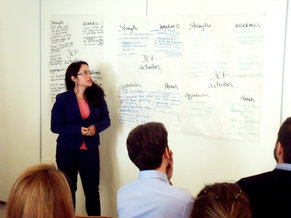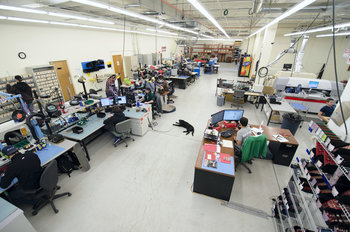
Higher costs | Poor location |
Limited distribution | Low brand recognition |
Low product quality | Poor service culture |
Inability to change | Slow time to market |
Inability to manage complex projects | Lack of creativity and inventiveness |
Lack of product features | Slow response to customers |
Disconnected from market realities | Poor user interfaces |
Product improvements that make products worse | Inefficient systems |
Inefficient processes | Inefficient supply chain |
Low performing partners | Low performing employees |
Negative company culture | Lack of response to customer feedback |
Lack of response to poor reviews | Customer input doesn’t drive product improvements |
Ineffective advertising | High employee turnover |
Employee absenteeism | Poor customer service |
Inefficient legacy technologies | Corporate narcissism |
Cronyism | Culture of mediocrity |
Hierarchies based on seniority over performance | Employees with exaggerated sense of entitlement |
Poor product positioning | High debt |
Limited access to capital | Poor customer relationships |
Higher overhead costs | Internal red tape |
Inability to scale | Poor ethical practices |
Reputational issues | Aging facilities, infrastructure and equipment |
Small size relative to competitors | The inefficiencies of very large firms such as communication overhead |
Trade barriers | Vulnerability to product knockoffs and imitators |
Inefficient product variety | Overreliance on a small number of employees or partners |
Technology
An expensive, slow, error prone or unusable technology platform.Scale
In many cases, a small firm is at a disadvantage to a larger firm simply because they lack the resources to compete in areas such as product development and advertising.Scope
An online retailer that sells only shoes may be at a disadvantage to a retailer that sells everything because people tend to want to shop at one place.Location
The coffee shop across the street from a busy train station may outperform the one three blocks from the station.Brand
An unknown brand is at a disadvantage to a widely recognized and respected brand.Cost
A more expensive cost per unit or overhead costs can be a dangerous disadvantage in any industry that produces commodities.Values
In many cases, customers will purchase from firms that align with their values such as respect for people and the environment. If your firm has a poor ethical climate this can be a significant disadvantage and risk.Productivity
A bloated large firm with a political culture and low motivation amongst employees may be vastly less productive than a small, aggressive firm.Quality
A reputation for low quality such as low rankings on review sites.Features
Lacking features in products and services that are in high demand by customers.Processes
Processes that are error prone, slow or expensive relative to the competition.| Overview: Competitive Disadvantage | ||
Type | ||
Definition | A condition or circumstance that causes a firm to lag the competition in a particular area. | |
Related Concepts | Diseconomies Of ScaleStrategy FailureCompetition | |






































